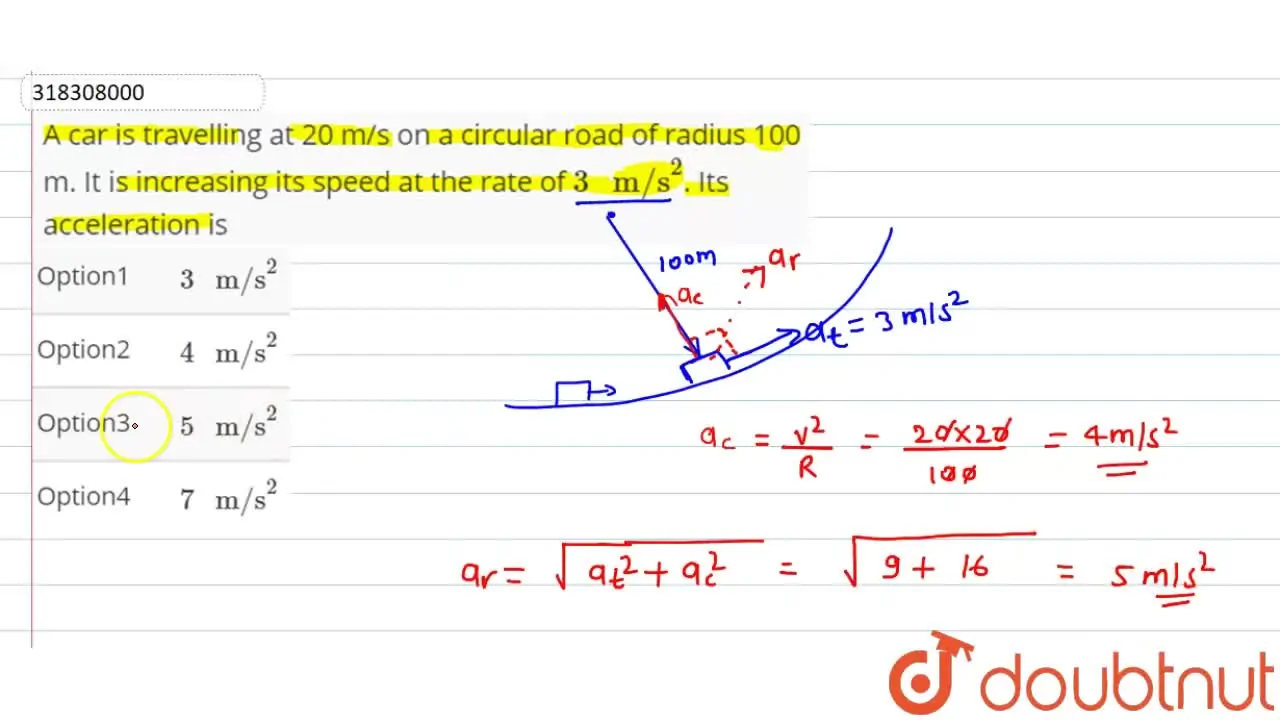A car is travelling at 20 m/s on a circular road of radius 100 m. It is increasing its speed at the rate of . Its acceleration is
The correct Answer is:C
Step by step video, text & image solution for A car is travelling at 20 m/s on a circular road of radius 100 m. It is increasing its speed at the rate of 3" m/s"^(2). Its acceleration is by Physics experts to help you in doubts & scoring excellent marks in Class 12 exams.
Similar Questions
A motor car is travelling at 60m/s on a circular road of radius 1200m. It is increasing its speed at the rate of 4m/s2. The acceleration of the car is:
View SolutionA moton car is travelling at 30m/s on a circular road of radius 500m. It is increasing in speed at the rate of 2ms−2. What is its acceleration ?
View SolutionA motor car is travelling 20m/s on a circular road of radius 400 m. If it increases its speed at the rate of 1m/s2, then its acceleration will be
View SolutionA motor car travelling at 30m/s on a circular road of radius 500m. It is increasing its speed at the rate of 2ms−2. What its accleratopm ?
View SolutionA motor car is travelling at 30m/s on a circular track of radius 450 m . If its speed is increasing at the rate of 2m/s2, then its acceleration will be
View SolutionA car is moving at a speed of 40 m/s on a circular track of radius 400 m. Its speed is increasing at the rate of 3 m/s2. The acceleration of car is
View SolutionA car is travelling at a given instant 40m/s on a circular road of radius 400m. Its speed is increasing at the rate of 3m/s. Its tangential acceleration is
View SolutionA car is travelling with linear velocity v on a circular road of radius r. If it is increasing its speed at the rate of a metre/sec2, then the resultant acceleration will be
View SolutionA vehicle is moving at a speed of 30 m/s on a circular road of radius 450 m. Its speed is increasing at a rate of 2ms2 . The acceleration of particle at this instant is
View SolutionIf a car is travelling at 20 m//s on a circular road of radius 400m then the radial acceleration will be
View Solution


